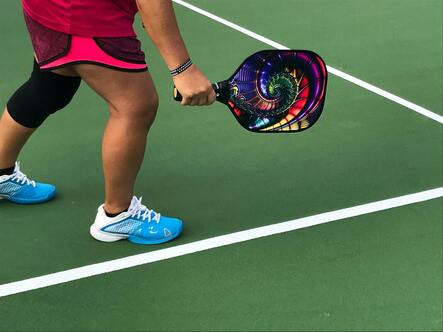 Photo by Joan Aseka on Unsplash
Photo by Joan Aseka on Unsplash Pickleball Skill Level Assessment Definitions
(a composite document)
I looked at a number of the online documents about assessing skill levels in pickleball. I compared their lists and created a composite of the required skills for the levels from 1.0 to 5.0.
Skill Level Rating Definitions
This list is a composite of several documents found on the Internet.
Level 1.0
- New—has minimal knowledge of the game.
Level 1.5
- Has taken at least one beginner lesson
- Learning how to serve
- Developing a forehand
- Fails to return easy balls frequently
- Learning to play the game, scoring and some basic rules
Level 2.0
- Has participated in novice and beginning skills practice
- Moves around the court in a balanced and safe manner
- Gets some serves “in”
- Realizes aspects of score-keeping, rules and where to stand on the court during serve, receive of serve, and general play
- Has some basic stroke skills, backhand, forehand, volley but has obvious weaknesses
- Familiar with where to stand in doubles play
Level 2.5
- Able to serve “in” more regularly
- Knows the two bounce rule and demonstrates it most times
- Knows where to stand on the court during serve, serve receive and general play
- Is mastering keeping score
- Aware of the soft game and occasionally tries to dink
- Working on form for ground strokes, accuracy is variable
- Makes longer lasting slow paced rallies
- Sometimes lobs with forehand with varying degrees of success
- Beginning to approach the non-volley zone to hit volleys
- Court coverage is weak but is improving
- Knows fundamental rules and can keep score
Level 3.0
- Working to keep the serve and serve receive deep
- Moves quickly towards the non-volley zone when opportunity is there
- Trying to make flatter returns (where appropriate)
- More aware of their partner’s position on the court and moving more as a team
- Developing more power in shots
- Beginning to attempt lobs and dinks with little success and doesn’t fully understand when and why they should be used
- Demonstrates improved skills with all the basic shot strokes and shot placement but lacks control when trying for direction, depth or power on shots
Level 3.5
- Demonstrates a broad knowledge of the rules of the game
- Gets high majority of serves “in”
- Able to serve and return serve deep
- Hits to the weak side of opponent often
- Demonstrates more strategies of playing during games
- Works better with partners in communicating, covering court, moving to net
- With varying consistency executes: lobs, forehand/backhand ground strokes, overheads, net volleys, and sustained dinking
- Starting to use drop shots in order to get to the net
- Knows when to make some specific placed shots in the game
- Working on mixing up soft shots with power shots to create an advantage
- Hits fewer balls out of bounds or in the net
- Dinks mostly in opponents' kitchen and dinks lower over the net
- Able to sustain dinking in the game
- Has a moderate number of unforced errors
Level 4.0
- Beginning to play more consistently in all phases of the game
- Anticipates opponents shots resulting in good court position
- Primarily plays offensively
- Controls and places serves and return of serves to best advantage
- Puts strategy into play in the game
- Consistently varies shots to create a competitive advantage
- Works and moves well with partner – easily switches court positions when required
- Very comfortable playing at the non-volley zone. Works with partner to control the line, keeping opponents back and driving them off line
- Can block volleys directed at them
- Has good footwork and moves laterally, backward and forward with ease
- Uses strategy in dinking to get a put-away shot
- Consistently executes effective drop shots
- Demonstrates 3rd shot strategies: drop shot, lobs and fast paced ground strokes
- Hits a low number of unforced errors per game
Level 4.5
- Able to regularly convert a hard shot to a soft shot
- Exhibits patience at a superior level
- Shows noticeably increased skills, a higher level of strategy, quickness of hands and movement, judicious use of power, superior placement of shots, anticipation of play, sustained volleying skills, superior put-aways – all with consistency
- Understands strategy and can adjust style of play and game plan according to opponents strength and weaknesses and court position
- Beginning to master dink and drop shots
- Makes very few unforced errors
- Has mastered all skills and strategies
- Dependable in stressful situations
- Athletic ability, quickness, and agility separates these players

 RSS Feed
RSS Feed